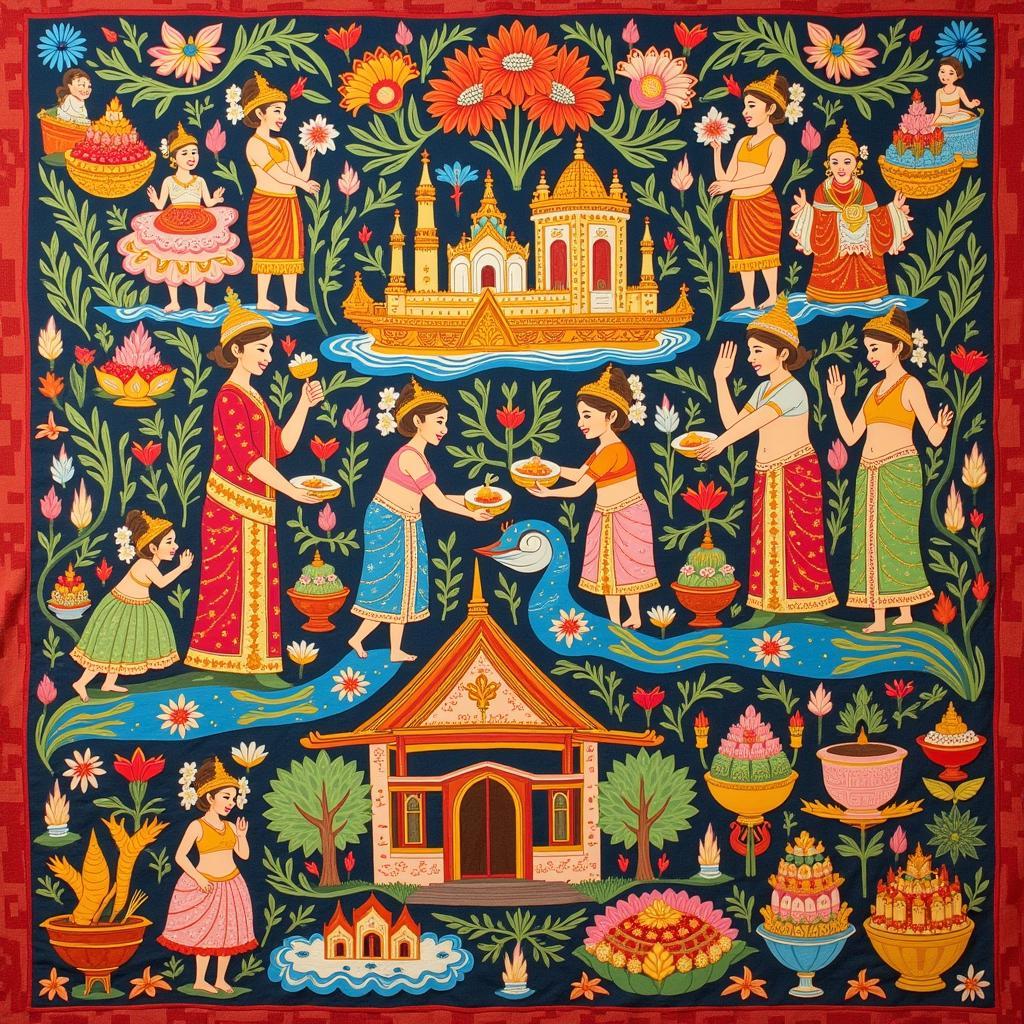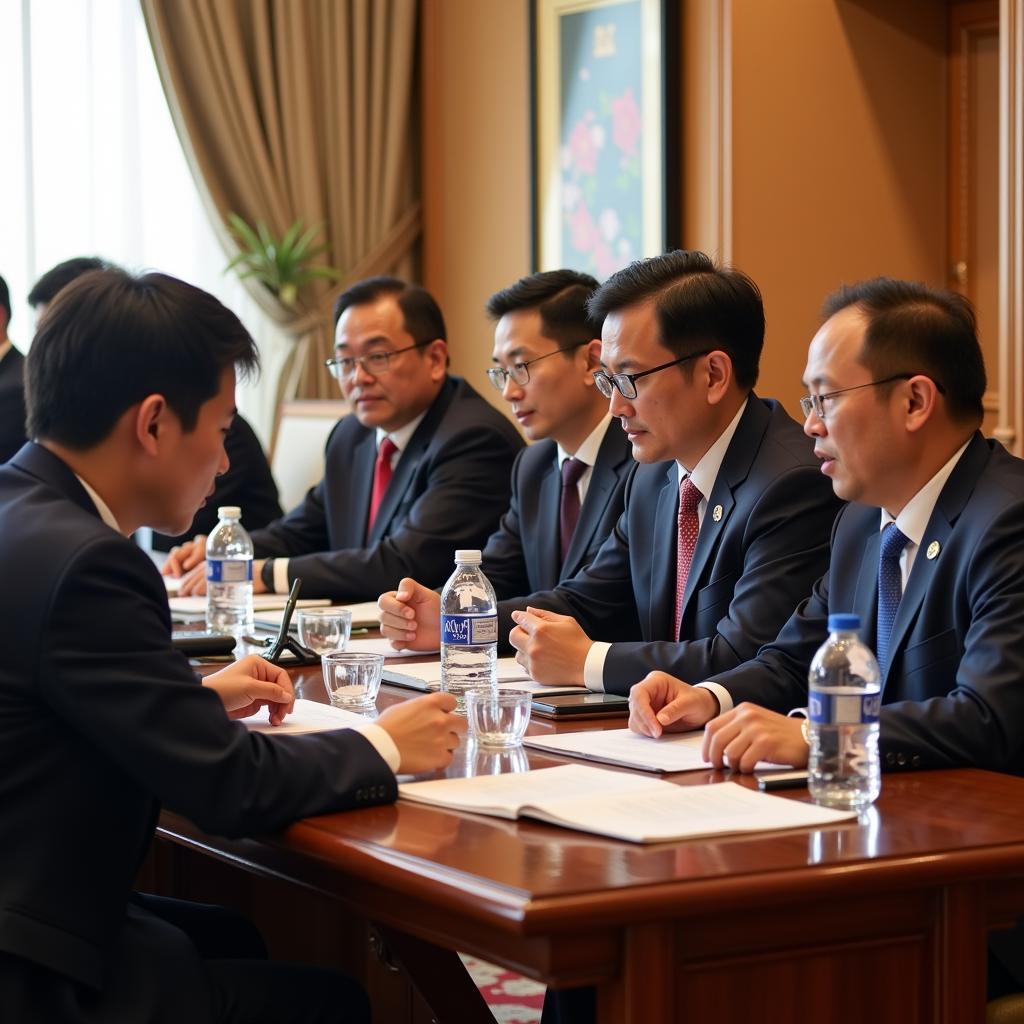ASEAN, the Association of Southeast Asian Nations, is a dynamic region renowned for its rich cultural heritage and rapid economic growth. But beyond the statistics lies a tapestry of traditions, languages, and artistic expressions that captivate the imagination. This article delves into the heart of ASEAN culture, exploring its diverse influences and highlighting its global significance.
From the ancient temples of Angkor Wat to the bustling streets of Singapore, ASEAN is a melting pot of indigenous cultures, colonial legacies, and modern influences. Each of its ten member states – Brunei, Cambodia, Indonesia, Laos, Malaysia, Myanmar, the Philippines, Singapore, Thailand, and Vietnam – boasts a unique identity shaped by centuries of history and interaction.
A Fusion of Influences: Shaping ASEAN Identity
 A vibrant tapestry showcasing the diverse cultural influences in ASEAN.
A vibrant tapestry showcasing the diverse cultural influences in ASEAN.
The cultural landscape of ASEAN is a testament to its history as a crossroads of trade and cultural exchange. Ancient empires like the Srivijaya and Majapahit left an indelible mark, evident in the region’s architectural wonders and religious practices. The arrival of Hinduism, Buddhism, and later, Islam, added further layers to the cultural fabric, resulting in a syncretic blend of beliefs and traditions.
European colonialism in the 18th and 19th centuries brought Western influences, particularly in architecture, language, and education. Despite the challenges of colonialism, ASEAN nations retained their cultural core, adapting and integrating foreign elements into their own traditions.
A Kaleidoscope of Arts and Traditions
The arts in ASEAN are as diverse as its people, reflecting the region’s history, beliefs, and daily life. Traditional dances, often imbued with religious or cultural significance, are a vibrant expression of community identity. From the intricate hand movements of Balinese Legong to the energetic bamboo poles of Filipino Tinikling, each dance tells a story and preserves cultural heritage.
Music in ASEAN is equally diverse, ranging from the haunting melodies of the Cambodian roneat to the rhythmic beats of Indonesian gamelan. Traditional instruments, crafted from local materials, produce distinctive sounds that have captivated audiences for generations.
Language and Communication: A Tapestry of Tongues
With over 800 languages spoken across its ten member states, ASEAN is a linguistically diverse region. While Malay serves as the official language of ASEAN, each country possesses its own official language and a multitude of local dialects.
This linguistic diversity reflects ASEAN’s historical trade connections and cultural exchanges. Despite the challenges of communication, multilingualism is a source of pride for many ASEAN citizens, representing their heritage and cultural adaptability.
ASEAN’s Global Significance: A Bridge Between East and West
Situated at the crossroads of major shipping routes, ASEAN has long been a bridge between East and West. Its strategic location has fostered trade, cultural exchange, and the dissemination of ideas for centuries. Today, ASEAN plays a pivotal role in global affairs, promoting regional cooperation and dialogue.
The region’s cultural diversity is an asset in an increasingly interconnected world. By embracing its heritage and fostering cross-cultural understanding, ASEAN can contribute to a more peaceful and prosperous future for all.
Conclusion
ASEAN’s cultural tapestry is a testament to its rich history, diverse influences, and vibrant traditions. As the region continues to evolve on the global stage, its cultural heritage will undoubtedly play a vital role in shaping its identity and fostering understanding between nations. The vibrant arts, languages, and traditions of ASEAN offer a glimpse into the soul of Southeast Asia, inviting exploration and appreciation from all corners of the world.


